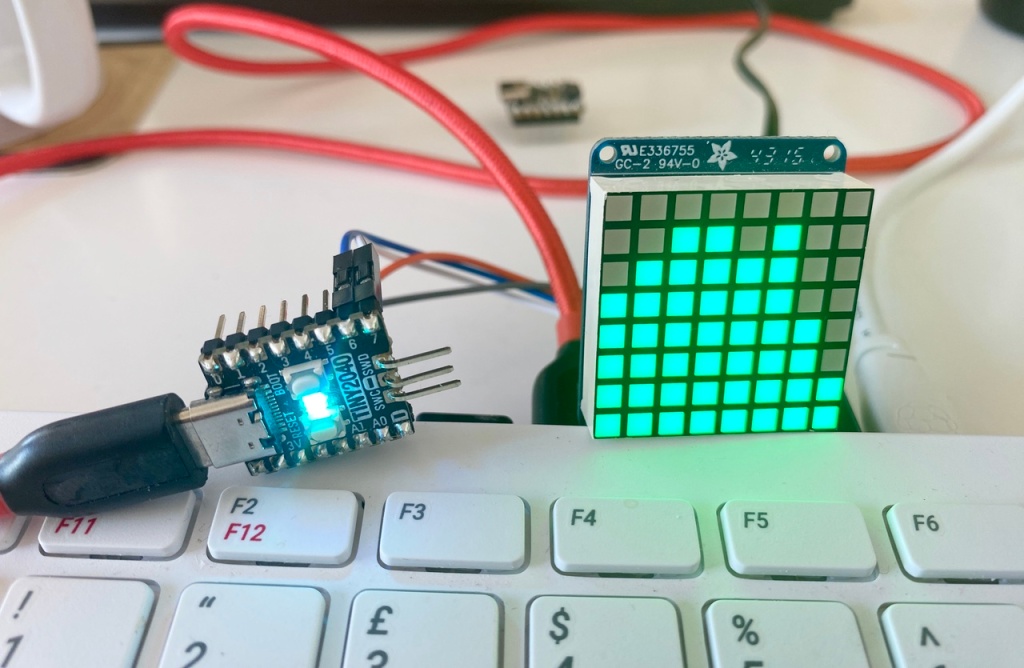A quick update on my Depot project: an RP2040-based host that provides Mac and Linux machines mediated access to external sensors, displays, actuators and other peripherals: version 1.2.2 extends board support to the Arduino Nano RP2040 Connect, and there’s better board selection too.
Continue readingTag Archives: Pico
Review: DFRobot Pico Gravity Board 👍🏻
I keep an eye out for Raspberry Pi Pico add-ons that make prototyping easier and do so inexpensively. DFRobot’s Pico Gravity Board is one such. It breaks out a stack of RP2040 GPIOs and buses to make it more straightforward to hook up displays, sensors and such.
Continue readingMeet Depot, an RP2040-based multi-bus adaptor for Macs and Linux PCs
I’d like to introduce you to Depot, the new name for an expanded version of the Raspberry Pi RP2040-based adaptor I launched last year as cli2c. Why the name change? In addition to I²C, the firmware and the client-side code that interacts with it, now supports 1-Wire, and more buses will be supported soon.
One year on: is the iPad any better for Raspberry Pi Pico development?
Imagine my surprise when I connected a Raspberry Pi Pico in UF2 mode to my iPad and it mounted as an accessible drive. Yes, iPadOS now supports UF2 drives, something it did not do just over a year ago when I last reported on my efforts to use an iPad as a mobile Pico development system.

Pico SDK 1.5.0 revamps IO over USB — and makes it work
The Raspberry Pi company released version 1.5.0 of the Pico SDK a week ago — right after I issued the latest version of my desktop computer-oriented I²C adaptor, which is based on the Pico’s RP2040 chip. If I’d have known about the SDK update, I would have held back — SDK 1.5.0 solves an irritating problem I’d faced with unexplained adaptor firmware hangs.

Review: Picoprobe PCB Kit 1.0 👎🏻
I haven’t been using a Picoprobe for a while because I needed to rebuild mine and issues with the code’s dependencies and a lack of updates from the Raspberry Pi Foundation meant I haven’t been able to get it to work properly. But I did spot this doohickey: a PCB you can solder a Pico and a header. It’s a much neater way to assemble a Picoprobe than breadboard and jumper wires.
Continue readingHow to use the RP2040’s Flash in CircuitPython apps
Here’s a very useful technique if you’re working on a CircuitPython program that you need to store data on the host microcontroller’s Flash — and to continue to be able to mount and access the device from your computer. I’ve used it with a Raspberry Pi RP2040-based board, but it should work with other CircuitPython devices too.
Continue readingHow to copy files to a Pico on a Ventura Mac error free
macOS 13.0.0 Ventura introduced an irritating problem for all us Mac-based Raspberry Pi Pico programmers: Finder no longer allows you to copy .uf2 files to a mounted Pico. It’s not a forbidden operation, but it does trigger an error that prevents the copy from taking place. This is undoubtedly the ‘new normal’, so here are some ways to circumvent the error. I’ll save the best one until last.
How to talk to I2C sensors, displays from… Linux
T’other week, I wrote about my work on building a Raspberry Pi RP2040-based I²C host device and some macOS client software to control it. I mentioned that I might get the latter running under Linux too. I now have, and it does.
Continue readingReview: Kitronic Pico Pin Breakout 👍🏻
A short post, this, to recommend Kitronic’s Pico Pin Breakout: an add-on that makes it really easy to make sure you’re wiring up a Raspberry Pi Pico’s pins correctly. It looks like this:
Continue reading






